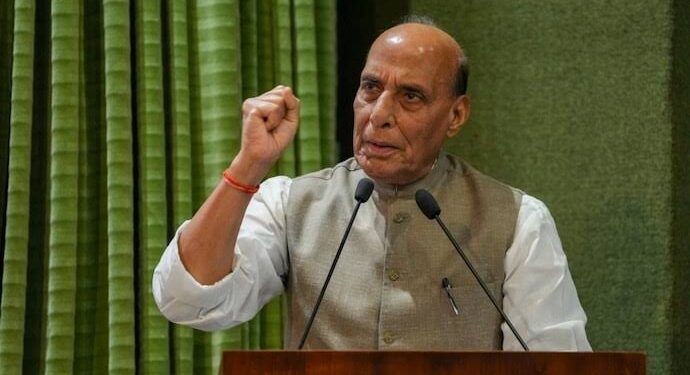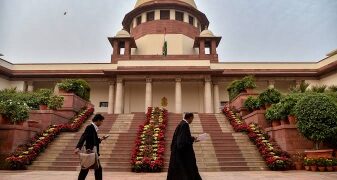Bohra and Agakhani Muslims : The central government has proposed several amendments to the Waqf Act, 1995. These include proposals ranging from changing the name of the Waqf Board to providing representation to women and creating a separate Auqaf Board for Bohras and Agakhanis. The proposed bill removes the controversial Section 40, which pertains to the board’s powers to decide whether a property is a Waqf property or not. To ensure representation of women, the bill proposes to provide a broad-based structure of the Central Waqf Council and State Waqf Boards and ensure representation of Muslim women and non-Muslims. It will also provide for the establishment of separate Auqaf Boards for Bohras and Agakhanis. Auqaf is the plural of Waqf. Let us know who are Bohras and Agakhanis.
Who are Bohras
The word Bohra comes from the Gujarati word Vohru Vyavahar, which means business. Muslims of the Bohra community are usually associated with business. People of the Bohra community are Muslims, but they are slightly different from ordinary Muslims. More than 20 lakh Bohra people live mainly in places like Maharashtra, Madhya Pradesh, Rajasthan, Kolkata, Chennai etc. Bohras are both Shia and Sunni like ordinary Muslims. Dawoodi Bohras have more similarities with Shias. On the other hand, Sunni Bohras follow Hanafi Islamic law.
Their population is in many countries
The population is also spread in countries like Pakistan, USA, Dubai, Arab, Yemen, Iraq etc. In Bohra society, the religious leader is called Sayyedna and whoever becomes Sayyedna, the Bohra society makes him the center of their faith. After the 21st and last Imam Tayyab Abul Qasim, the tradition of spiritual gurus started from 1132, who are called Dai-al-Mutlaq. When the 52nd Dai-al-Mutlaq Sayyedna Mohammed Burhanuddin died, his son Sayyedna Dr. Mufadul Saifuddin became the successor from 2014. Saifuddin is the 53rd Dai-al-Mutlaq.
Also read- The man born in India who spread ‘hatred’ in 3 countries through his party
Origin of Bohra Muslims
Dawoodi Bohra Muslims are linked to the Fatimid Imams, direct descendants of the Prophet Mohammed, who ruled much of the Islamic world between the 10th and 12th centuries. ‘Bohra’ is a corruption of the Gujarati word ‘vahaurau’, meaning ‘trader’. They are part of the Mustaali sect which came to India in the 11th century through missionaries from northern Egypt. After 1539, when the Indian community grew larger, the sect shifted its headquarters from Yemen to Siddpur in India. In 1588, a split occurred between the followers of Dawood bin Qutb Shah and those of Suleiman. Today the head of the Suleimanis lives in Yemen, while the Dawoodi Bohras, being the most numerous, have their headquarters in Mumbai.
Difference between Dawoodi and Suleman Bohra
Despite being divided into Dawoodi and Suleman followers, there is no major difference in the religious principles of Bohras. Bohras have special faith in Sufis and shrines. Sunni Bohras follow Hanafi Islamic law, while the Dawoodi Bohra community is a sub-community of the Ismaili Shia community. This is a community completely attached to its ancient traditions, which includes marrying only within their own community. Many Hindu customs can also be seen in their lifestyle.
Also read- Those snakes whose length and weight will surprise you, where are their homes in the world including India
What is the outfit
The Dawoodi Bohra community has a distinctive form of dress. Men traditionally wear a three-piece white garment consisting of a tunic called a ‘kurta’, an overcoat of equal length called a ‘saya’, and pants or trousers called ‘izaar’. Men also wear white or golden-coloured caps embroidered with golden and white threads. Men of the Bohra community are expected to grow a full beard, following the practice of Prophet Muhammad.
Women wear Rida
Women of this community wear a double robe called ‘Rida’ which is different from other forms of hijab. Rida is designed with its bright colors, decorative patterns and lace. Rida does not cover the face of the woman completely. Rida can be of any color except black. It has a small palla called pardi which is usually folded on one side so that the face of the woman is visible, but it can also be worn over the face as per the need.
Also read- A huge piece of ice bigger than Haryana, why is it floating in the sea for 38 years
Who are Agakhani Muslims?
The people of Ismaili or Agakhani Muslim community are a branch of Shia Muslims. The people of this community are followers of Ismail bin Jafar, son of Imam Jafar as Sadiq. People of this community live in more than 25 different countries. They mainly live in Central and South Asia, Africa, Middle East, Europe, North America and Australia. The population of people of Agakhani Muslim community around the world is close to 1.5 crores. Agakhani Muslims came to Sindh province from Khyber province of Afghanistan 950 years ago and then settled in India.
I don’t do five namaz, I don’t even do Hajj
People of the Agakhani community are different from other Muslims. Their religious customs are also different. They do not offer namaz five times a day. Agakhani Muslims are known by different names. They are also called Ismaili, Khoja Muslim and Nizari Muslim. Ismaili Muslims worship in Jamatkhanas, where women also worship along with men. Agakhani Muslims do not observe fasts for the entire month during Ramzan. They believe that every day is for God. They do not even go on Haj.
What does Waqf do
Waqf boards have been formed to manage the Waqf property. There are about 30 Waqf boards across the country which manage the Waqf properties in that state or union territory. All Waqf boards work under the Waqf Act 1995. Waqf can be any movable or immovable property, which any person who believes in Islam can donate for religious purposes. There is no owner of this donated property. Allah is considered the owner of this donated property, but Waqf boards have been formed to manage it.
Tags: Indian Muslims, Muslim, Muslim Organisations, Muslim Population, islamic religion, shia waqf board, Waqf Board
FIRST PUBLISHED : August 8, 2024, 18:39 IST






